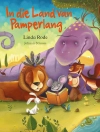In ‘Grim Tales, ‘ E. Nesbit expertly weaves together a series of darkly whimsical short stories that explore the complexities of human nature and the thin veil between reality and the supernatural. With a distinctive literary style marked by intricate narratives and a blend of fairy tale elements with gothic undertones, Nesbit invites readers into a world where the macabre and the innocent coexist. Each tale is imbued with a rich sense of moral ambiguity, reflecting the social and psychological undercurrents of her time, particularly the late Victorian Era’s fascination with the uncanny and the unknown. E. Nesbit, a pioneering figure in children’s literature, was profoundly influenced by her tumultuous upbringing and experiences with social movements such as socialism and feminism. Her rich background and personal convictions often seep into her writing, offering a unique lens through which to view childhood, escapism, and morality. This collection, published in the early 20th century, reveals her mastery in delving into darker themes while maintaining a keen sense of wonder and imagination, characteristics that set her apart from her contemporaries. Readers seeking to understand the intricacies of fear and fantasy will find ‘Grim Tales’ an essential addition to their literary repertoire. Nesbit’s brilliant storytelling not only captivates but also provokes thought, making it a valuable exploration of the human psyche. Perfect for fans of classic literature and those intrigued by the interplay between light and shadow in tales, this collection is a testament to Nesbit’s enduring legacy as a storyteller.
Giới thiệu về tác giả
Edith Nesbit, known as E. Nesbit, was a prolific English author and poet recognized for her innovation in the field of children’s literature during the late 19th and early 20th centuries. Born on August 15, 1858, Nesbit’s enduring works have cemented her legacy as a pioneer who blended realism with fantastical elements, a style that prefigured and influenced later writers such as C.S. Lewis and J.K. Rowling. Her literary oeuvre is extensive, but among her collections of stories, ‘Grim Tales’ stands as a testament to her versatility and ability to weave macabre narratives with a moral undertone. This anthology, distinct from her more famous works like ‘The Railway Children’ and the ‘Five Children and It’ series, showcases her adeptness in the genre of supernatural and horror tales, aimed at a more mature audience. In addition to children’s books, Nesbit also penned poetry and adult novels, often under her married name, E. Bland, reflecting on social and political issues of her time. E. Nesbit’s literary style combined clear, vivid descriptions with an empathetic understanding of child psychology, a revolutionary approach during a time when didacticism dominated children’s literature. Her contributions have earned her recognition as a cornerstone of children’s literature, and her work continues to be read and appreciated for its charm, wit, and imaginative flair. She passed away on May 4, 1924, but her influence endures in the timeless appeal of her stories.












